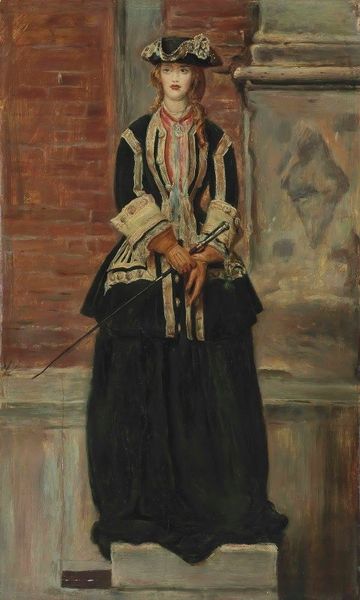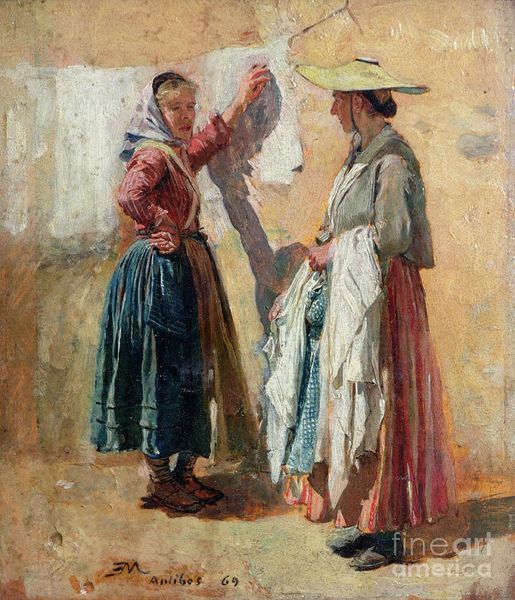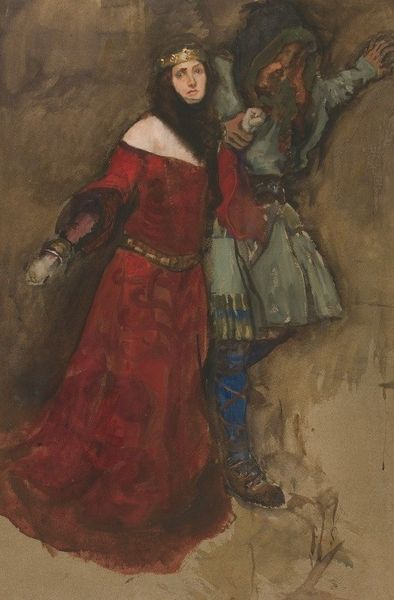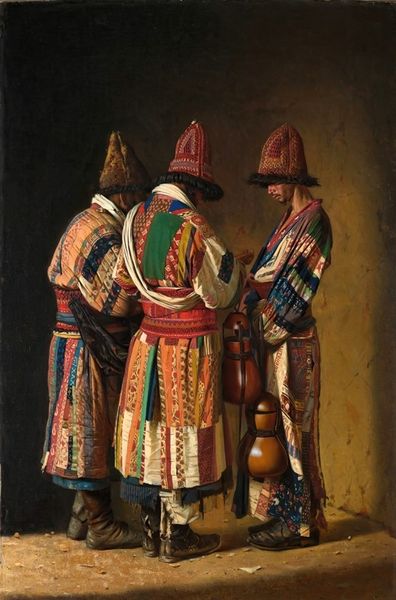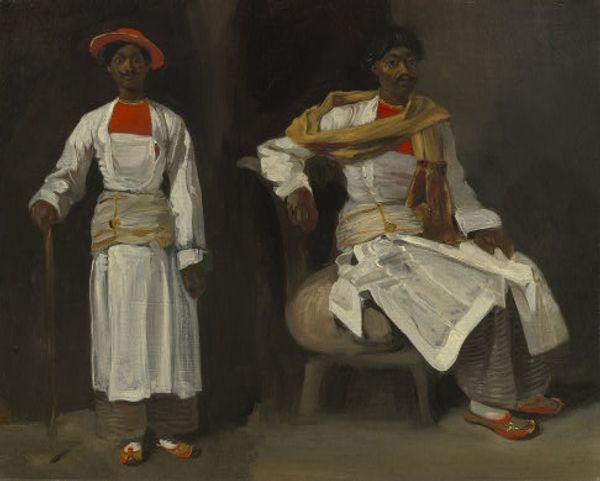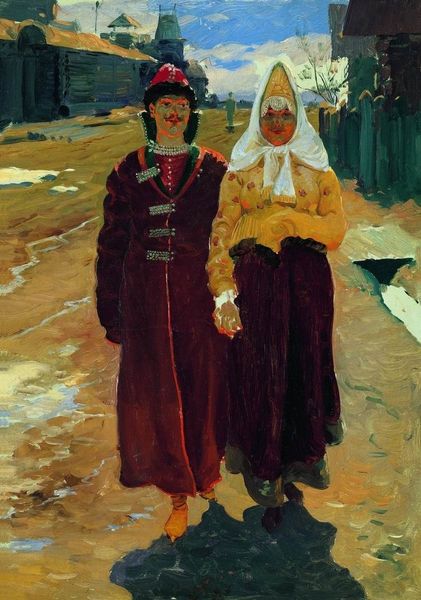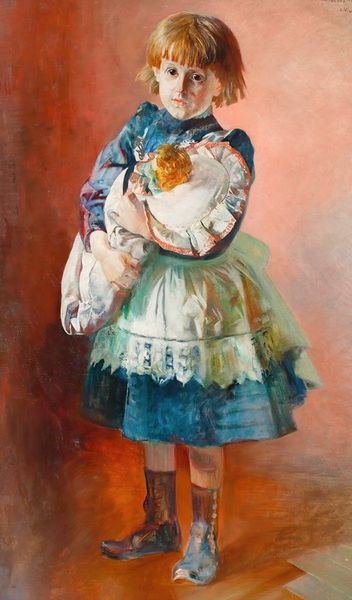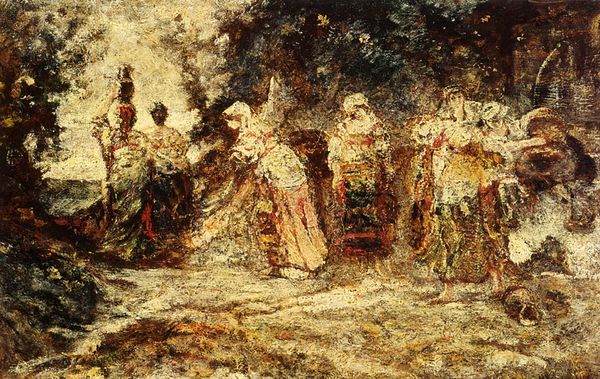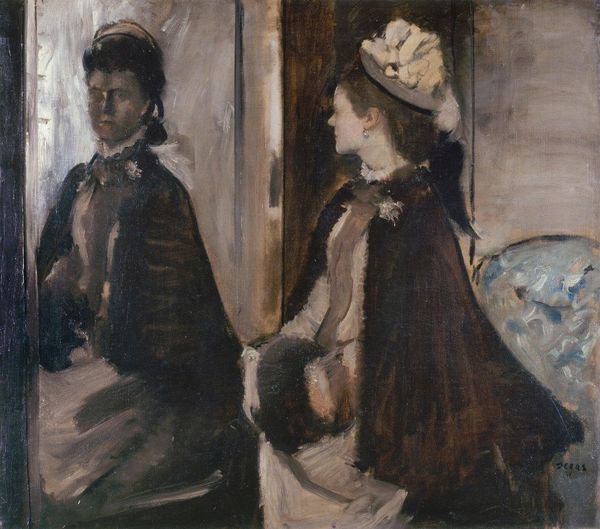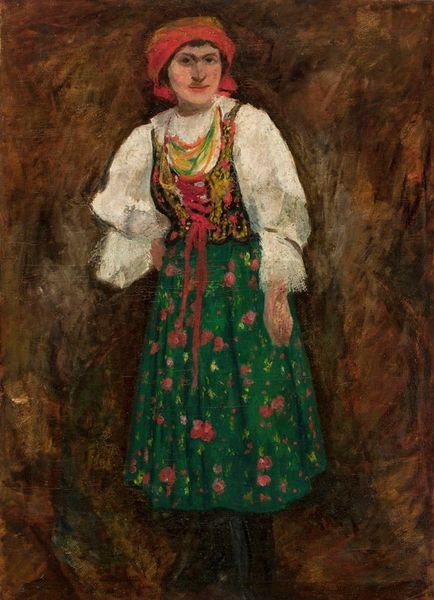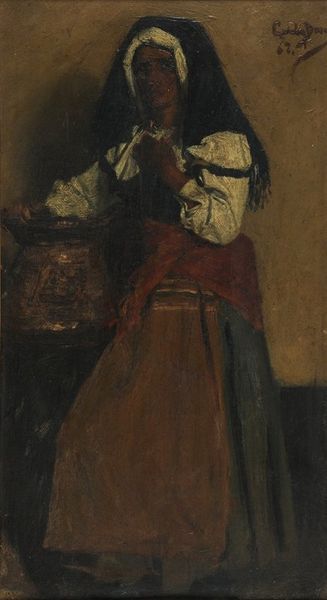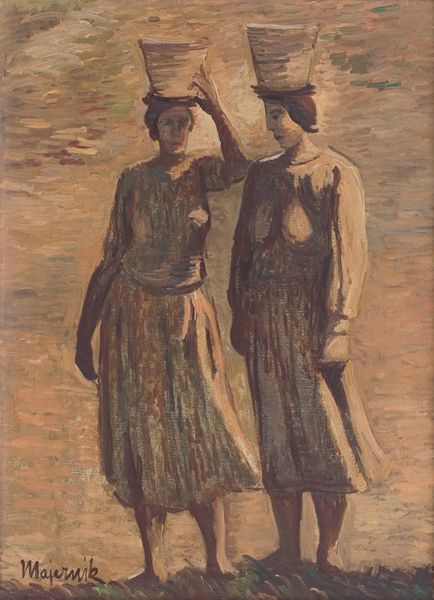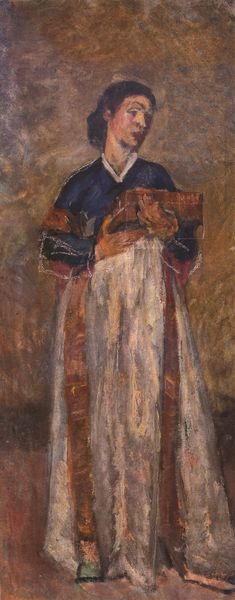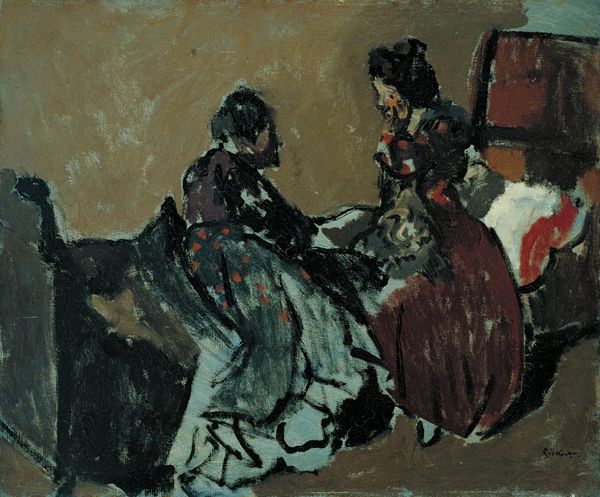
mixed-media, painting, oil-paint, textile
#
portrait
#
gouache
#
mixed-media
#
painting
#
oil-paint
#
textile
#
oil painting
#
romanticism
#
costume
#
history-painting
#
mixed media
#
watercolor
Copyright: Public domain
Curator: Delacroix's "Two Views of costumes Souliotes," created in 1825, captures the essence of a pivotal moment in Greek history. It is more than just a portrayal of attire; it’s a lens through which we examine identity, resistance, and the broader narrative of nationhood during a time of upheaval. Editor: My immediate impression is one of fragmented beauty. The brushstrokes are loose, the figures somewhat indistinct, yet the textiles appear strikingly real. There is an incompleteness here. It speaks to the labor involved in material construction and Delacroix's engagement with it. Curator: Exactly. Delacroix’s fascination with the Souliotes, an Orthodox Christian community known for their fierce resistance against the Ottoman Empire, places this piece firmly within the Romantic movement's emphasis on liberty and exoticism. These costumes weren't merely clothing; they represented cultural identity in the face of oppression. The intentional incompleteness suggests an ongoing struggle, an identity still in formation. Editor: Interesting how he captures that visually, almost withholding clarity. But consider the material cost: the gold thread woven into their jackets, the specific dye used to color their sashes. What narratives of trade and labor are embedded in these fabrics themselves, contributing to an image of resistance? How does Delacroix negotiate painting itself, alongside these methods? Curator: A great point. The Souliotes were romanticized figures, yes, but the reality of their daily lives – the economics that sustained their resistance – often goes unexamined. This is something that feminist and postcolonial theory addresses. Editor: Perhaps we should reconsider our reading of 'incompleteness.' Maybe he sought a way to expose the constructedness of resistance through raw process; laying bare the labor to call for freedom while recognizing a need to acknowledge how all social stratums might have engaged this call differently according to the materiality of their place and craft? Curator: So you’re suggesting he complicates the hero narrative, drawing our attention to the material conditions that enable such resistance? Editor: Precisely. The very textures Delacroix recreates are tied to human work and political tension. By representing them he makes this struggle more 'complete'. Curator: It's compelling to consider the agency embedded in the choice of fabrics, the significance of colors – these are powerful semiotic tools of self-representation for the community resisting dominance. Editor: The beauty in that semiotic agency lies in the active manipulation of available resources and creative labor—in defiance. Curator: The Souliotes’ history as a symbol of unyielding freedom continues to resonate. And looking closely here brings awareness to how complicated it is to arrive at collective ideas for freedom. Editor: These layers invite us to appreciate both Delacroix's technique and the inherent materiality of this depiction and that in itself becomes worthy of respect.
Comments
No comments
Be the first to comment and join the conversation on the ultimate creative platform.
